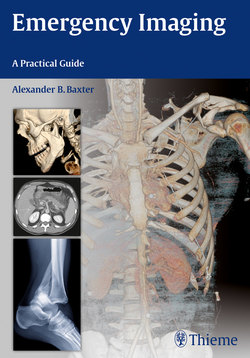Читать книгу Emergency Imaging - Alexander B. Baxter - Страница 95
На сайте Литреса книга снята с продажи.
Оглавление81
2Brain
pressure, some patients’ symptoms mayimprove with therapeutic lumbar puncture,and patients in this group sometimes benefit from ventriculoperitoneal shunt placement.
Obstructive hydrocephalus, or noncom-municating hydrocephalus, refers to dila-tion of ventricles proximal to a mechanical block by tumor, blood clot, developmental web, periventricular parenchymal hemor-rhage, or other mass. The most frequent sites of obstruction are the foramina of Monro, the third ventricle, the sylvian aq-ueduct, and the fourth ventricle.
Obstructive hydrocephalus may be acute or chronic. In acute obstructive hy-drocephalus, CSF passes through small tears in the stretched ventricular ependy-mal lining and is absorbed by capillaries in the adjacent brain parenchyma (transep-endymal CSF resorption). This appears as low-attenuation parenchymal changes ad-jacent to the dilated lateral ventricles and does not occur in chronic or slowly devel-oping hydrocephalus.
Temporal horn enlargement may be the earliest manifestation of acute ventricular obstruction. The width of the third ven-tricle is a sensitive and reliable indicator of changes in ventricular volume on serial examinations (Fig. 2.35).
◆Hydrocephalus
Communicating hydrocephalus consists of enlargement of all cerebral ventricles due to impairment of CSF resorption by dural arachnoid granulations. It may be acute or chronic. Causes include trauma, subarach-noid hemorrhage, meningitis, and prior surgery. In patients with chronic commu-nicating hydrocephalus, a cause may not be identified, and patients come to clinical attention when hydrocephalus is inciden-tally discovered on studies obtained for minor trauma or in the evaluation of cog-nitive impairment.
Distinguishing between communicat-ing hydrocephalus and global cerebral atrophy may be dicult and depends on estimation of ventricular size in relation to sulcal enlargement. Generalized cere-bral atrophy may be due to chronic alcohol or anticonvulsant use, prior trauma, and neurodegenerative disorders such as Par-kinson disease, Alzheimer dementia, and long-standing multiple sclerosis.
Normal-pressure hydrocephalus is aclinical syndrome, usually seen in patientsover 50 years old, in which communicatinghydrocephalus is associated with gradualdevelopment of urinary incontinence, gaitdisturbance, and memory loss. Even thoughthese patients have a normal CSF opening
Fig. 2.35a–fa,b Chronic communicating hydrocephalus. Ventricular enlargement out of proportion to sulcal size. This appearance would be characteristic of a patient with clinical ndings of normal-pressure hydrocepha-lus or could be due to remote meningeal inammation, most often from subarachnoid hemorrhage or meningitis.
c,d Chronic obstructive hydrocephalus due to a cerebellar medulloblastoma. A hyperdense mass lls the fourth ventricle. The third and lateral ventricles are enlarged but do not show transependymal CSF resorption.
e,f Acute obstructive hydrocephalus due to craniopharyngioma. Partially calcied, solid, and cystic su-prasellar mass. Lateral ventricular enlargement; normal third ventricle and cortical sulcal eacement are due to obstruction at the foramina of Monro. Subtle low-attenuation parenchymal changes adjacent to the ventricles indicate transependymal CSF resorption.
